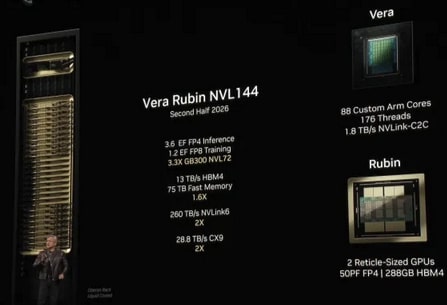Nvidia's AI Roadmap: Blackwell, Rubin, and the Rise of LLMs
Nvidia's dominance in the AI hardware market is undeniable. But what's next for the green giant? Their recent announcements surrounding projects Blackwell and Rubin, alongside their unwavering commitment to Large Language Models (LLMs), paint a compelling picture of their ambitious AI roadmap. This article delves into the specifics, exploring the implications for the future of AI and the technology landscape as a whole.
Project Blackwell: Redefining Data Center AI Infrastructure
Project Blackwell isn't just another chip; it's a fundamental shift in how data centers approach AI workloads. Nvidia positions Blackwell as a crucial component in their strategy to build highly scalable and efficient AI infrastructure. This likely involves advancements in:
- Networking: Improved inter-chip communication and data transfer speeds are vital for handling the massive datasets LLMs require. Expect Blackwell to incorporate cutting-edge networking technologies to facilitate seamless data flow within and between servers.
- Memory: LLM training demands immense memory capacity. Blackwell's design likely addresses this need with high-bandwidth memory solutions, minimizing bottlenecks and accelerating training times.
- Power Efficiency: The energy consumption of AI training is a significant concern. Blackwell will likely incorporate power-saving features to reduce operational costs and environmental impact.
The impact of Blackwell's success could be significant, potentially enabling the training of even larger and more sophisticated LLMs than currently possible, accelerating the pace of AI innovation.
Project Rubin: A Focus on Generative AI and LLM Deployment
While Blackwell focuses on the infrastructure, Project Rubin tackles the application side, concentrating on making LLMs more accessible and easier to deploy. This project likely involves:
- Simplified Deployment: Rubin aims to streamline the complex process of deploying and managing LLMs, making it more accessible to developers and businesses with limited AI expertise.
- Optimized Frameworks: Nvidia is likely investing in optimizing deep learning frameworks to work seamlessly with Rubin, simplifying development and enhancing performance.
- Enhanced Inference Capabilities: Efficient inference (the process of using a trained LLM to generate outputs) is crucial for real-world applications. Rubin's focus on this area will likely lead to faster and more cost-effective LLM deployments.
Rubin represents Nvidia’s move towards democratizing access to generative AI, paving the way for widespread adoption across various industries.
The Key Role of Large Language Models (LLMs)
Both Blackwell and Rubin are intrinsically linked to Nvidia's broader commitment to LLMs. These models are at the heart of many transformative AI applications, from chatbots and language translation to code generation and drug discovery. Nvidia's investment underscores their belief in the immense potential of LLMs to reshape various sectors.
- Healthcare: LLMs can assist in medical diagnosis, drug discovery, and personalized medicine.
- Finance: LLMs can be used for fraud detection, risk assessment, and algorithmic trading.
- Education: LLMs can provide personalized learning experiences and automate administrative tasks.
Nvidia's Competitive Advantage and Future Outlook
Nvidia's strategic focus on both the hardware (Blackwell) and software (Rubin) aspects of AI, coupled with their commitment to LLMs, positions them strongly for continued market leadership. Their holistic approach differentiates them from competitors, offering a complete ecosystem for AI development and deployment.
However, the landscape is dynamic. Competition is fierce, and technological advancements are rapid. Nvidia's continued success will depend on their ability to innovate and adapt to the ever-evolving needs of the AI industry. The success of Blackwell and Rubin will be crucial indicators of their continued dominance.
Call to Action: Stay tuned for further updates on Nvidia's AI initiatives. Subscribe to our newsletter to receive the latest news and insights on the ever-evolving world of artificial intelligence.
